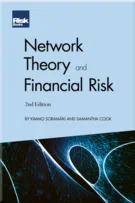The Importance of Preventive KRIs
The Importance of Preventive KRIs
Introduction
Operational Risk in Four Letters
An Invisible Framework
Small is Beautiful in OpRisk Management
The Business Value of ORM
How to Minimise ‘People Risk’
The Missing Piece
Risk Appetite and Framework
From Russian Roulette to Overcautious Decision-making
The Importance of Preventive KRIs
How to Build Preventive Key Risk Indicators
Unlocking KRIs
Six Steps for Preventive KRIs
Have Your Cake and Eat It
Conduct, Not ‘Conduct Risk’
How to Manage Incentives
Is Reputation Risk Overstated?
What Regulators Want
Conduct & Culture
OpRisk Takes Forward Steps at OpRisk Europe 2014
Modern Scenario Analysis
The Rogue’s Path
Rogue Trading No Training: The Connections
What Brexit Teaches OpRisk
OpRisk Survey Shows the Insidious Effects of Political Risk
Discarding the AMA Could Become a Source of OpRisk
UCL Research Shows that SMA Reforms Introduces Capital Instability and Discourages Risk Management
Memo to Bank CEOs: Treat OpRisk with More Respect
Don’t Let the SMA Kill OpRisk Modelling
Useful risk indicators help identify rises in probabilities of occurrence of incidents early enough to prevent them. In Paris, taxi meters are limited to eleven hours per day, preventing cab drivers overworking, since tiredness is a well-documented contributor to car accidents. Generally speaking, knowing the risk drivers of incidents is a requirement for their prevention. It is also a requirement for selecting effective KRIs, or key risk indicators.
Risk drivers are well known in many areas. Transport safety, IT security or telecoms are industries that have been long and well observed to the point that specialists know what to monitor and when to intervene. In banking, credit risk and fraud risk have been scrutinised for decades; their drivers are common knowledge, especially in retail. Credit analysts know which financial ratios, management behaviours and economic conditions will trigger a rise in credit risk. Most retail bankers will recognise suspicious behaviours in fraudulent loan applications. Similarly, since the rogue trading incidents at Société Générale in 2008 and UBS in 2011, many banks have identified and developed the monitoring of specific KRIs for rogue trading.
Copyright Infopro Digital Limited. All rights reserved.
As outlined in our terms and conditions, https://www.infopro-digital.com/terms-and-conditions/subscriptions/ (point 2.4), printing is limited to a single copy.
If you would like to purchase additional rights please email info@risk.net
Copyright Infopro Digital Limited. All rights reserved.
You may share this content using our article tools. As outlined in our terms and conditions, https://www.infopro-digital.com/terms-and-conditions/subscriptions/ (clause 2.4), an Authorised User may only make one copy of the materials for their own personal use. You must also comply with the restrictions in clause 2.5.
If you would like to purchase additional rights please email info@risk.net









